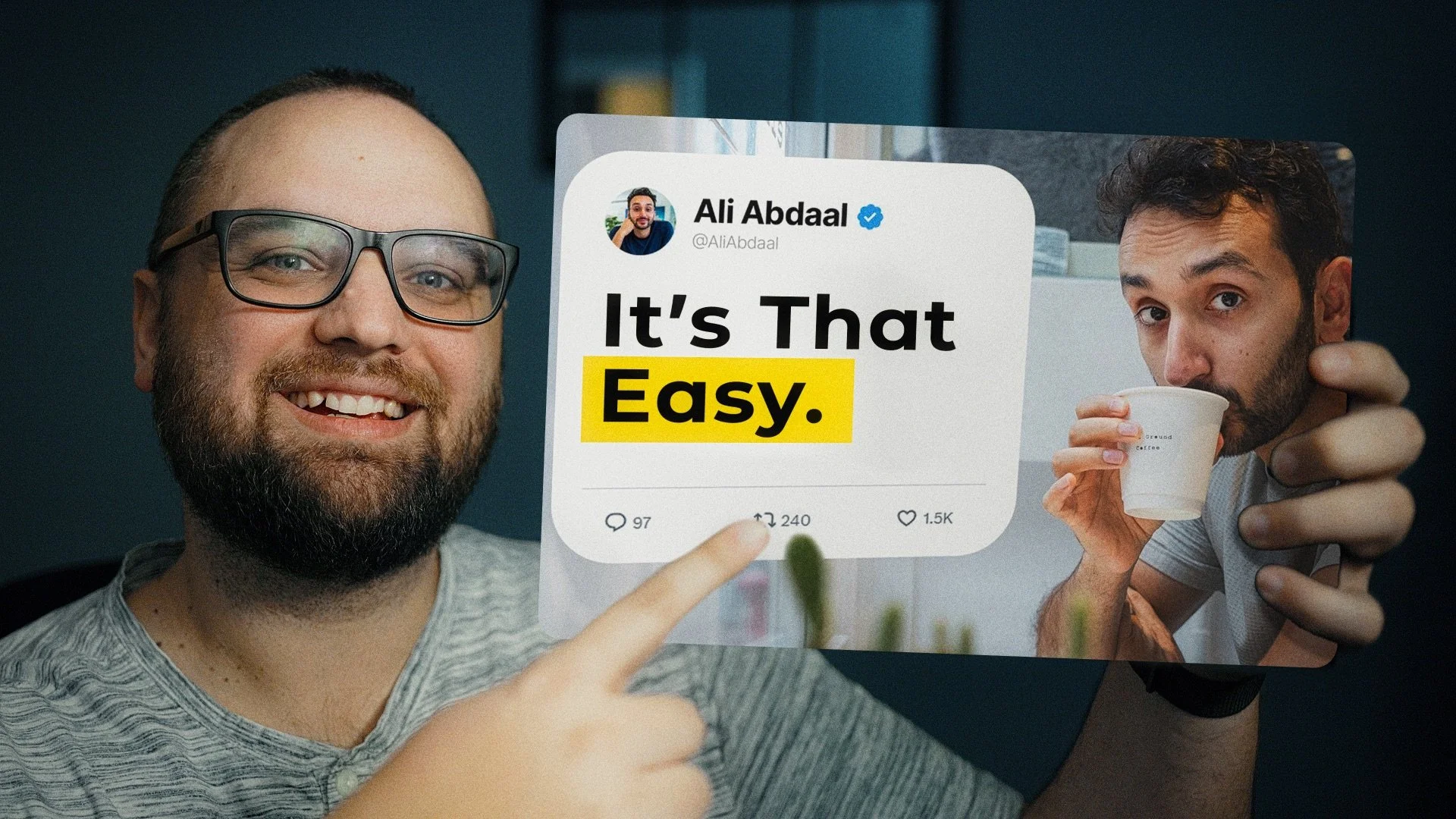Discover 3 Proven Strategies for Effective THUMBNAIL Design
If your YouTube videos aren’t getting the clicks and views you expected, your thumbnails might be the culprit. A strong thumbnail grabs attention instantly and compels people to watch. In this post, I’ll break down three key principles you should focus on when designing thumbnails that stand out: Emotion, Clarity, and Contrast.
1. Use Emotion to Create a Connection
Thumbnails that evoke emotion make people stop scrolling. Why? Because we instinctively react to human expressions and emotions.
Facial expressions are the easiest way to add emotion. Whether it's surprise, excitement, or frustration, a strong reaction in your thumbnail can trigger curiosity.
Be careful with exaggerated, clickbaity expressions—make sure they feel authentic to your content.
If you’re building a personal brand, using your own face consistently in thumbnails helps establish recognition and trust with your audience.
Next time you create a thumbnail, ask: What emotion do I want my audience to feel when they see this?
2. Keep It Clear & Uncluttered
One of the biggest mistakes creators make is overcomplicating their thumbnails. A cluttered, chaotic thumbnail is hard to process and easy to ignore.
One clear focal point: Whether it’s your face, an object, or a bold text hook, there should be one obvious thing the viewer’s eye is drawn to.
Minimal text: If you’re using text, keep it short and zoom out to see if it’s readable at a small size. Tiny, crammed text won’t be effective.
Simple backgrounds: Busy backgrounds make it harder to read text and recognize the subject. Use blurs, solid colors, or gradients to clean up the visual.
If your thumbnail isn’t clear at a glance, it’s not working.
3. Leverage Contrast for Visibility
Your thumbnail needs to pop—meaning it should stand out even when competing with other videos in someone’s feed.
Bold color contrast: Light text on dark backgrounds (or vice versa) makes things readable. Avoid low-contrast combinations like white text on a light background.
Outline & drop shadows: Subtle effects can help separate your subject from the background.
Use colors strategically: High-contrast, complementary colors (like blue and orange or red and yellow) naturally draw attention.
When designing, squint your eyes at your thumbnail. If nothing stands out, it likely needs more contrast.
Case Study: Ali Abdaal’s Thumbnails
Ali Abdaal consistently creates high-performing thumbnails by nailing emotion, clarity, and contrast.
Example 1: “If You Hate Your Job, Watch This”
Emotion: Ali is relaxed and nonchalant, triggering curiosity.
Clarity: Simple layout with minimal elements.
Contrast: High-contrast black text on a white background with a yellow highlight.
Example 2: “Why You Feel Lost (And What to Do About It)”
Emotion: A frustrated expression, reinforcing the theme.
Clarity: Just his face and a screenshot of his notes—clean and effective.
Contrast: Light background, Black text—ensuring readability.
Want to see this in action? In my next video, I’ll walk through step-by-step how to recreate these thumbnails using simple tools. Stay tuned!
Final Thoughts
If you want your YouTube thumbnails to perform better, focus on these three principles:
✅ Emotion – Make your audience feel something.
✅ Clarity – Keep it simple, clear, and distraction-free.
✅ Contrast – Use colors and design to stand out.
The next time you design a thumbnail, run it through this checklist—and watch your click-through rate improve.



